Portuguese folk dance is a vibrant expression of the country’s rich cultural heritage. Each region has its own unique style that reflects local traditions and histories. These dances tell stories of everyday life, work, and celebration accompanied by traditional Portuguese music.
The costumes worn by dancers add a colorful visual element to the performances. These are usually region-specific and historically accurate, enhancing the authenticity of the dance. Through these dances, Portugal preserves and celebrates its diverse cultural identity, passing traditions from one generation to the next.
Without further ado, let’s delve into the history of Portuguese folk dance and the most popular festivals that showcase it.
The Roots and Evolution of Portuguese Folk Dance
Portuguese folk dance, or “danças folclóricas,” traces its origins back to ancient rituals and celebrations evolving over centuries to incorporate influences from various periods in Portuguese history. From the Minho region’s lively “vira” to the solemn grace of the Algarve’s “corridinho,” these dances encapsulate the geographical and cultural distinctions across Portugal.
The evolution of these dances mirrors the broader currents of Portuguese society, absorbing elements from Roman, Moorish, and later, global influences. This blend of traditions underscores the dynamic nature of folk dance, adapting to changes while preserving core elements that define its character.
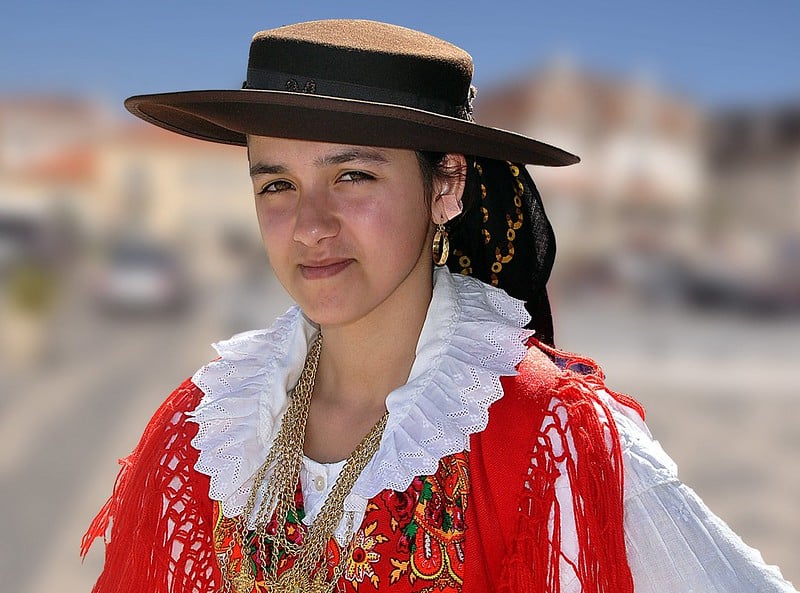
Cultural Significance and Regional Variations
Folk dances in Portugal often coincide with festivals and religious celebrations and mark significant moments in the agricultural calendar, saints’ days, and historical events. They bring together people of all ages to celebrate their heritage and pass it on to future generations.
The regional variations of Portuguese folk dance display the country’s rich tapestry of cultural influences. In the northern regions, dances are energetic and robust, characterized by rapid footwork and intricate patterns, reflecting the Celtic heritage of the area. The “vira,” for instance, is renowned for its lively tempo and complex choreography, which symbolizes the Minho’s lively community life.
Conversely, the southern regions, influenced by centuries of Moorish rule, exhibit dances that are more reserved and graceful. The “Corridinho,” a popular dance from the Algarve, features a slower pace and fluid movements that embody the laid-back essence of southern Portugal.
The Role of Music and Costume
Music plays an indispensable role in Portuguese folk dance, with traditional instruments like the guitarra portuguesa (Portuguese guitar), accordion, and tambourine setting the rhythm and mood of the dances. The melodies range from the exuberant sounds of celebration to the melancholic tunes of longing and love. This passionate music tells a story conveying the emotions and themes inherent in the dance’s origins.
Costumes are another critical element of Portuguese folk dance, a visual feast that enhances the dance’s storytelling. These garments are meticulously crafted and reflect the regional characteristics and historical periods they represent—from the colorful skirts and shawls of the northern regions to the intricate embroidery and hats of the south.
Folk Dance in Different Regions of Portugal
Northern Portugal is known for its “Vira,” a lively dance with a quick tempo. Central to the Vira dance is its performance by couples, who engage in the dance without the customary hand-holding found in many other dance forms. This adds an element of individual flair and independence to the shared dance experience.
The dance also accommodates solo performances, typically by women, which allows for a varied expression of the dance’s core movements and rhythms. The organization of dancers into a circle facing each other before the dance commences is a hallmark of the Vira, fostering a sense of community and collective joy among the participants.
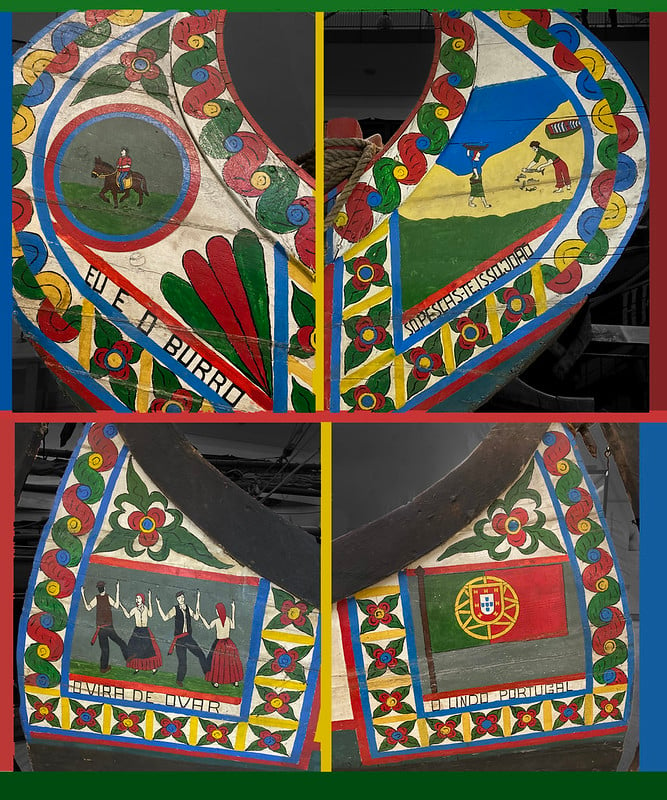
Central Portugal showcases the “Bailinho da Madeira.” This is a traditional folk dance from the Madeira archipelago, a group of islands in the Atlantic Ocean that is an autonomous region of Portugal. The Bailinho da Madeira is emblematic of Madeira’s rich cultural heritage, reflecting the island’s history, traditions, and the joyful spirit of its people.
The Bailinho da Madeira is characterized by its lively tempo and cheerful melody, typically performed to the accompaniment of traditional Madeiran instruments. These include the “braguinha” or “machete” (a small stringed instrument similar to a ukulele), the “rajão” (a five-stringed instrument), and sometimes percussion instruments like the “brinquinho,” a unique Madeiran creation that adds a distinctive rhythm to the music.
Dancers usually form pairs and engage in a series of steps that include quick movements, turns, and sometimes playful interactions between the partners. The dance often involves a sequence of choreographed movements that tell a story or depict scenes from daily life, which adds a theatrical element to the performance.
It is a dance with movement and a lot of life, in which the dancers take turns and jump with great speed. There are also those who call it the ball of eight, for being danced by four pairs that form a square.
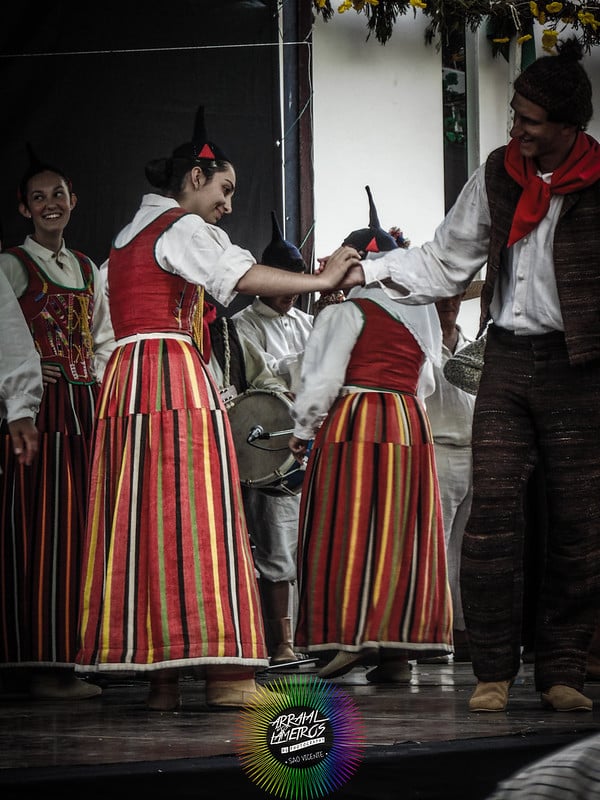
Southern Portugal, particularly the Algarve, offers the “Corridinho.”
The Corridinho combines cultural influences from Eastern Europe with local Portuguese traditions. Originating in the 19th century, the dance is believed to have been introduced to the Algarve region of Portugal by the Spaniard Lorenzo Alvarez Garcia, who used it as a romantic gesture to court a Portuguese lady. This dance quickly gained popularity alongside the introduction of the accordion to Portugal, becoming a staple of local culture.
Central to the Corridinho is its nature as a couple’s dance, emphasizing partnership and coordination. Dancers form two concentric circles, with women in the inner circle and men in the outer, engaging in a dynamic and interconnected performance reminiscent of Eastern European dances like the Polka or Mazurka. However, the Corridinho distinguishes itself with unique steps and choreography, which have evolved over time to incorporate more complex and intricate movements.
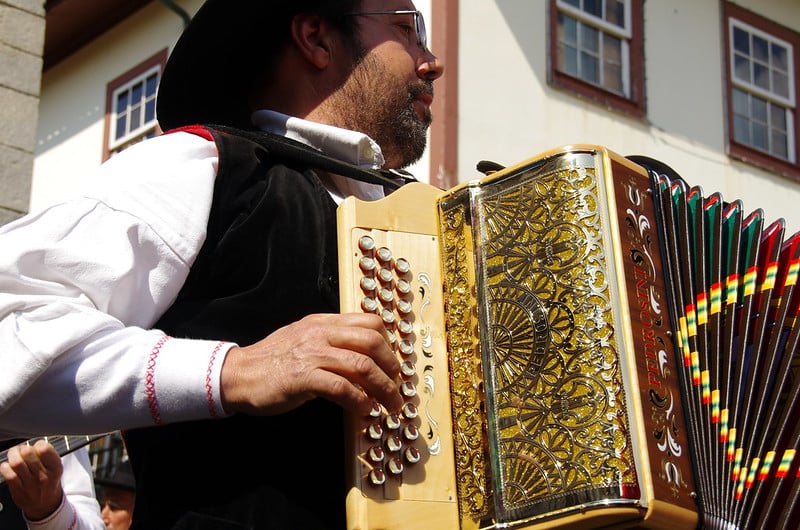
Traditional Folk Dance Festivals in Portugal
Festa de São João in Porto is one of Portugal’s most exciting festivals and celebrates Saint John the Baptist. The party starts in the early afternoon of June 23 and usually lasts until the morning of June 24. The streets come alive with music, dance, and festivities. Traditional folk dance is a highlight, with groups performing throughout the city.
The Feira de São Mateus in Viseu is one of the oldest fairs in Portugal, dating back to the Middle Ages. Running from August to September, it features a wide range of cultural events. Folk dance performances are a central part of the festivities, showcasing the region’s rich traditions.
Romaria de Nossa Senhora d’Agonia in Viana do Castelo: Held in August, this festival is famous for its grand parade of traditional costumes. Folk dance groups perform against the backdrop of beautifully decorated streets, celebrating the region’s cultural heritage.
Festa das Cruzes in Barcelos: Taking place in early May, the Festa das Cruzes marks the beginning of the Portuguese festival season. It features a variety of folk dances, including the vira, malhão, and chula, with performers donning traditional costumes, parading through the streets, and showcasing the local folklore.
Festa de São Gonçalinho in Aveiro: Celebrated in January, this festival honors São Gonçalinho with a unique blend of religious ceremonies and popular festivities. Traditional folk dance performances are a highlight and reflect the maritime heritage of the region.
Feiras Novas in Ponte de Lima: Held in September, this historic fair dates back to the 19th century. It’s a vibrant celebration of Minho’s cultural traditions, with folk dance performances, parades, and music filling the streets of Portugal’s oldest village.
Each of these festivals gives visitors a chance to experience Portugal’s diverse regional traditions and the universal language of dance. If you are lucky enough to catch one of these lively festivals, prepare to experience not only the beauty of Portuguese folk dance but also the warmth and hospitality that Portugal is renowned for.
Final Thoughts
Portuguese traditional folk dance offers a glimpse into Portugal’s soul. Festivals across the country provide a platform for these traditions to continue flourishing. Through them, the spirit of Portuguese folk dance will endure, connecting past, present, and future generations. We hope you can catch one of Portugal’s beautiful folk dances or even try a dance yourself!

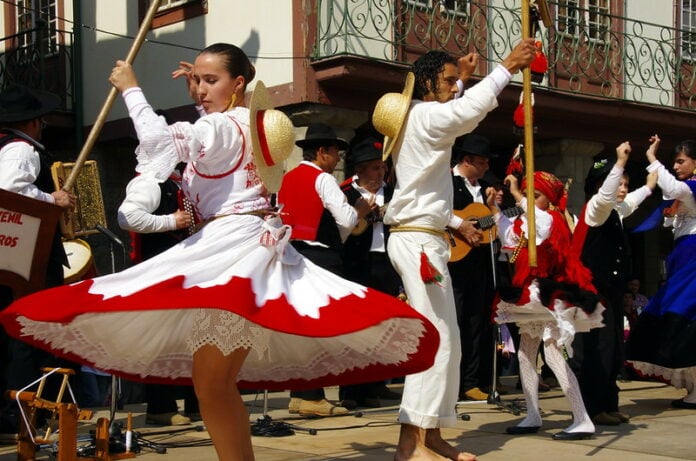

We are visiting the Douro in September and I’m sure I saw somewhere that there is folk dancing in Amarente on Saturdays near the market, but I can’t find the site again. Can you confirm that, please?
Hi Robert, we cannot confirm if there is folk dancing on Saturdays, but there is a food market on Wednesdays and Saturdays from 8:00 am – 1:00 pm.